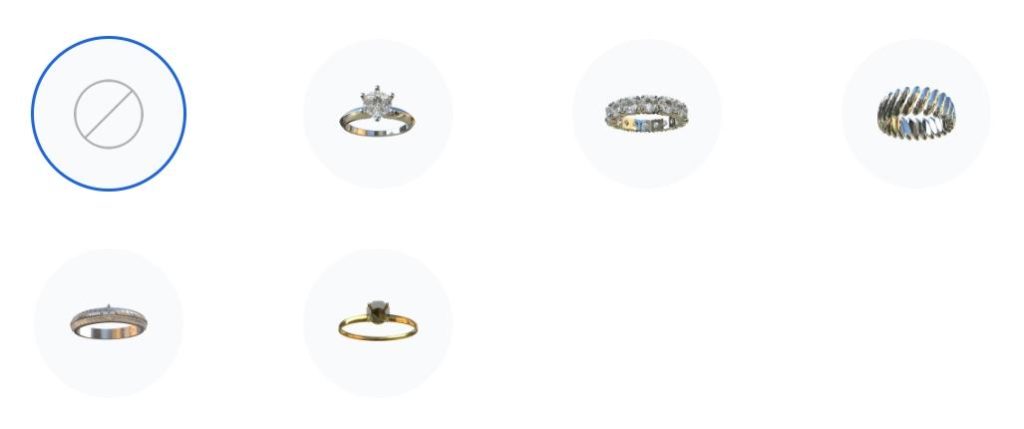Buying rings online often raises doubts. Customers want to see how a ring fits, looks, and feels on their hand. Photos and product specs alone don’t give the full picture. Tencent RTC virtual ring try on solves this by using real-time augmented reality (AR) to show rings on the user’s finger—live, through their smartphone or webcam. This feature creates a new kind of jewelry shopping experience. Customers don’t just scroll through images. They interact with products in real-time. That builds confidence, shortens the decision process, and reduces returns.
How Virtual Try-On Makes Jewelry Shopping Smarter
Tencent’s RTC-powered try-on technology allows real-time visual fitting without needing to download a separate app. It runs directly through websites or in-app browsers using camera access and AI-based hand tracking.
Realistic 3D rendering with precise hand tracking
The system uses advanced AR modeling and Tencent’s real-time communication framework to render rings in high fidelity. Rings appear on the user’s actual finger in a live video feed, adapting to hand movement, lighting, and finger rotation. The virtual ring adjusts in real time as the customer moves their hand. Users can switch between different styles, sizes, metals, and stones instantly. The 3D rendering engine ensures reflections, shadows, and textures match the look of physical rings. This makes the online experience closer to the in-store experience. Customers can compare designs on their hands without visiting a shop. This reduces uncertainty, especially for high-ticket purchases like engagement or wedding rings.
Seamless integration into e-commerce platforms
Retailers can embed the try-on feature into their existing website or app. Tencent provides developer-friendly SDKs with customization options for branding, UI layout, and ring catalog integration. There’s no need for third-party apps or complicated downloads. When a customer visits a product page, they can click “Try On” and instantly launch the camera-based experience. Integration works across platforms—desktop, mobile, and tablet. This makes the experience accessible to more users. It also allows retailers to showcase the feature during live events, video consultations, or influencer sessions. Seamless integration helps retailers guide the buyer through the full journey: browse, try, compare, and purchase—all in one place.
Stronger buyer confidence and lower return rates
Virtual try-on removes one of the biggest doubts in online jewelry shopping: “Will this look good on me?” Seeing the product in their hand helps shoppers picture themselves wearing it. This emotional connection increases confidence and reduces hesitation. Customers make decisions faster because they don’t need to imagine. They can try five or six styles in seconds and settle on the one that feels right. This reduces cart abandonment and increases conversion rates. When customers know what to expect visually, they’re less likely to return the product. For jewelry retailers, fewer returns mean lower logistics costs and higher margins. It also leads to higher customer satisfaction and loyalty.
Why Tencent RTC’s AR Solution Outperforms Others
The advantage of Tencent’s virtual try-on is its real-time performance, scalability, and visual realism—all delivered through the browser without delays or app downloads. Tencent RTC infrastructure uses globally distributed servers and adaptive bitrate streaming to maintain video clarity and responsiveness. The virtual ring appears with no noticeable delay, even under varied network conditions. Users can move their hands naturally. The ring stays locked in place, responding instantly to gestures. Whether the customer is shopping in a city or a remote location, the AR effect works smoothly. This low latency gives customers a premium experience. They feel like they’re using high-end in-store tech, right from their device. Retailers can upload their 3D ring models with exact dimensions, materials, and settings. The platform supports customization of the virtual try-on interface, including call-to-action buttons, color themes, and engagement prompts. This level of branding control helps retailers deliver a unified experience. Customers see your ring, your logo, and your store design, without jumping between different apps or services.
Conclusion
Tencent RTC Virtual Ring Try-On brings confidence, speed, and interactivity to online jewelry shopping. It transforms the passive browsing experience into an engaging, personalized journey. Customers don’t just view—they try, compare, and connect. For retailers, it improves conversion, reduces returns, and builds stronger trust. For shoppers, it removes guesswork and makes choosing a ring feel easier, faster, and more fun. As digital shopping evolves, features like virtual try-on will set the standard. Tencent’s solution delivers that experience today, with performance, flexibility, and visual realism that make online jewelry shopping feel just right.

